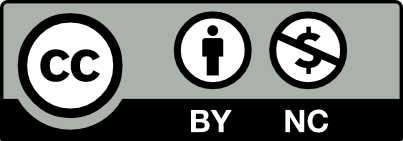Correction of glabellar protrusion after botulinum toxin injection for forehead wrinkles
Abstract
Botulinum toxin blocks the release of the neurotransmitter acetylcholine and helps to treat wrinkles. The efficacy and safety of botulinum toxin injection for upper facial wrinkles were established in several previous studies. Common side effects include transient headache, bruising, eyebrow ptosis and eyelid swelling. No adverse life threatening events or long-term complications have been reported. However, there have been a few reports on site-specific side effects, except for eyebrow ptosis or eyelid swelling. Two previous cases showing exaggerated glabellar wrinkles after botulinum toxin injection for forehead horizontal lines reported that no specific treatment for the exaggeration of wrinkles were done and it was left to slowly recede. In the present report, we highlighted a patient, whose significant glabellar protrusion was rapidly and effectively corrected with the use of botulinum toxin injection.
References
Blitzer A, Binder WJ, Aviv JE, Keen MS, Brin MF. The management of hyperfunctional facial lines with botulinum toxin. A collaborative study of 210 injection sites in 162 patients. Arch Otolaryngol Head Neck Surg 1997; 123(4): 389–392.
Carruthers A, Carruthers J. Botulinum toxin type A for the treatment of glabellar rhytides. Dermatol Clin 2004; 22(2): 137–144. doi: 10.1016/S0733-8635(03)00071-8.
Carruthers A, Carruthers J, Cohen J. A prospective, dou-ble-blind, randomized, parallel-group, dose-ranging study of botulinum toxin type A in female subjects with hori-zontal forehead rhytides. Dermatol Surg 2003; 29(5): 461–467. doi: 10.1046/j.1524-4725.2003.29114.x.
Carruthers JA, Lowe NJ, Menter MA, Gibson J, Nordquist M, et al. A multicenter, double-blind, random-ized, placebo-controlled study of the efficacy and safety of botulinum toxin type A in the treatment of glabellar lines. J Am Acad Dermatol 2002; 46(6): 840–849. doi: 10.1067/mjd.2002.121356.
Rzany B, Dill-Müller D, Grablowitz D, Heckmann M, Caird D. Repeated botulinum toxin A injections for the treatment of lines in the upper face: A retrospective study of 4,103 treatments in 945 patients. Dermatol Surg 2007; 33(s1): S18–S25. doi: 10.1111/j.1524-4725.2006.32327.x.
Kang SM, Feneran A, Kim JK, Park O, Kim JE, et al. Exaggeration of wrinkles after botulinum toxin injection for forehead horizontal lines. Ann Dermatol 2011; 23(2): 217–221. doi: 10.5021/ad.2011.23.2.217.
Ascher B, Talarico S, Cassuto D, Escobar S, Hexsel D, et al. International consensus recommendations on the aes-thetic usage of botulinum toxin type A (Speywood Unit) - Part I: Upper facial wrinkles. J Eur Acad Dermatol 2010; 24(11): 1278–1284.doi: 10.1111/j.1468-3083.2010. 03631.x.
Copyright (c) 2020 Kim MW, et al.

This work is licensed under a Creative Commons Attribution-NonCommercial 4.0 International License.
Author(s) shall retain the copyright of their work and grant the Journal/Publisher rights for the first publication with the work concurrently licensed under the Creative Commons Attribution-Noncommercial 4.0 International License
Under this license, author(s) will allow third parties to download, reuse, reprint, modify, distribute and/or copy the content under the condition that the authors are given credit and that the work is not used for commercial purposes. No permission is required from the authors or the publisher.
This broad license intends to facilitate free access, as well as the unrestricted use of original works of all types. This ensures that the published work is freely and openly available in perpetuity.



